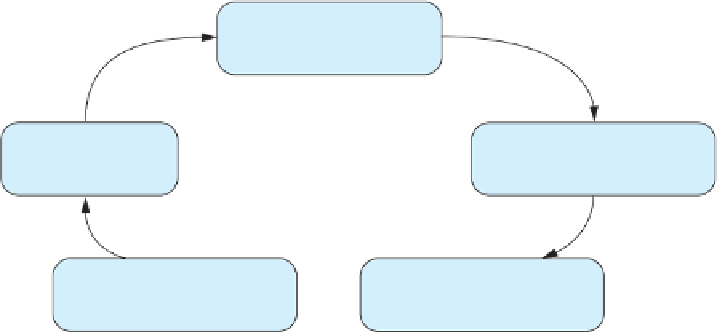HTML and CSS Reference
In-Depth Information
methodologies have their roots in the
System Development Life Cycle (SDLC)
, a process
that has been used for several decades to build large-scale information systems. The
SDLC comprises a set of phases, sometimes called steps or stages. Each phase is usually
completed before beginning the activities in the next phase. The basic phases of the
standard SDLC (see Figure 10.1) are systems investigation, systems analysis, systems
design, systems implementation, and maintenance.
Figure 10.1
The System
Development Life
Cycle (SDLC)
Systems Integration
Feasibility Study
Maintenance
Improved System
Systems Analysis
Functional Requirements
Systems Implementation
Operational System
Systems Design
Systems Specification
Web sites are often developed using a variation of the SDLC that is modified to apply
to Web projects. Large companies and Web design firms usually create their own
special methodology for use on projects. The Web Site Development Cycle is a guide
to successful Web project management. Depending on the scope and complexity of a
particular project, some steps can be completed in a single meeting; other steps can
take weeks or months.
The Web Site Development Cycle, shown in Figure 10.2, usually consists of the follow-
ing steps: Conceptualization, Analysis, Design, Production, Testing, Launch,
Maintenance, and Evaluation.
Figure 10.2
The Web Site
Development Cycle
Conceptualization
Identify Opportunity
Evaluation
Review Site
Analysis
Gather Requirements
Maintenance
Fix and Enhance Site
Design
Define the Solution
Production
Create Content
Construct Site
Launch
Publish Web Site
Testing
Test Site






Search WWH ::

Custom Search